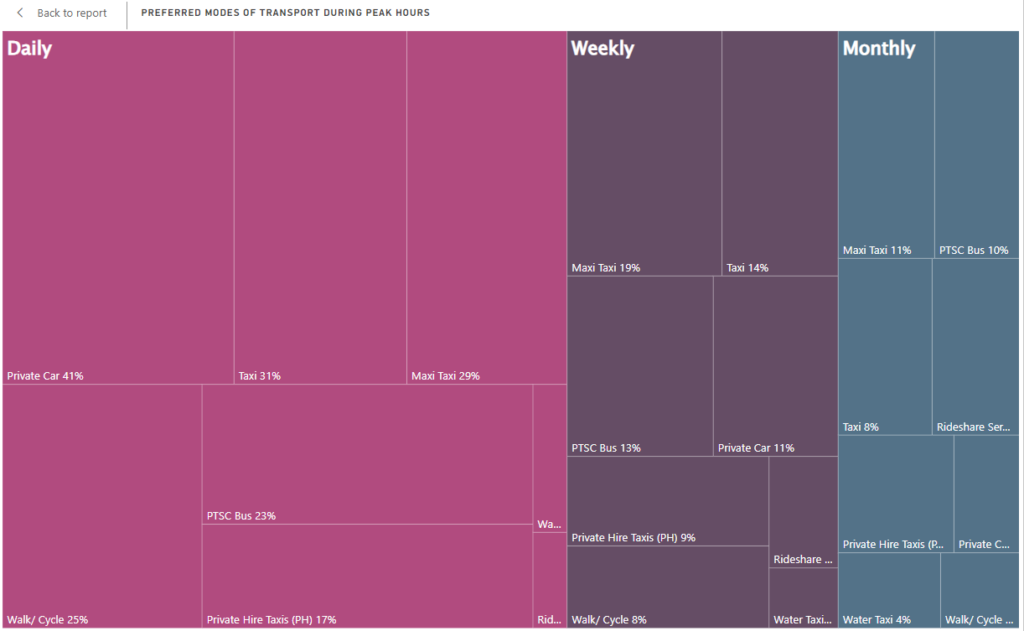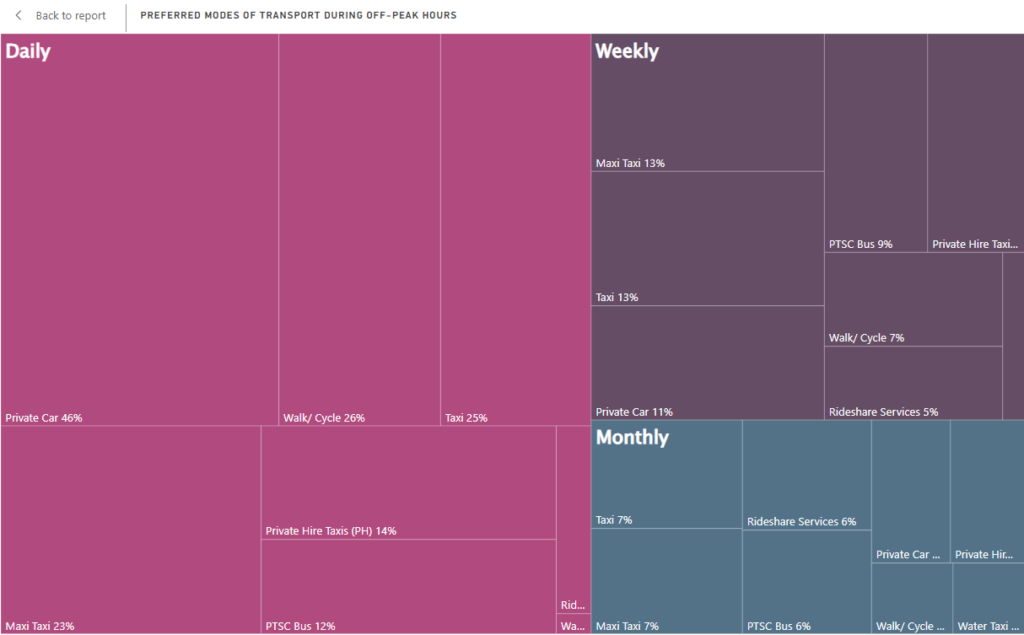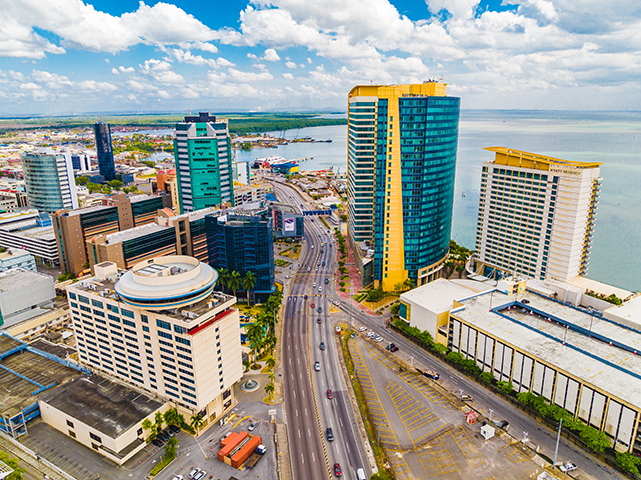Background
At the intersection between the pinnacle of technological advancement and intelligence, society has achieved remarkable feats, like self-driving cars and manned lunar missions. However, we are perennially challenged by the Herculean task of avoiding traffic congestion in major cities, towns and transport corridors across the Caribbean including getting a person from San Fernando to Port of Spain. Dwelling in the twin-island Republic of ‘Traffic-dad’ and Tobago, a country of merely 5,128 km² in size, is a gluttonous ‘monster’ ravaging approximately 1,200,000 million productive hours cumulatively daily. Congestion is fueled by the demand for transport of islanders whose home is located 20-plus kilometers afar to their place of work or study. Distance and low-density fuels the challenge. Transport is key for any societal activity, thus, an understanding of the demographic distribution of the demand is intrinsically linked to an analysis of traffic, which is foundational to any discussion of its potential remedies.
Survey Insights
Six hundred and ninety-two (692) traffic congestion victims shared their views via a questionnaire published on the Ministry of Works and Transport’s website and social media accounts between January and February 2023. The data collected revealed that the destination that is most traversed to by persons in Trinidad is the capital of Port-of-Spain (Figure 1). Journeys to Port-of-Spain originate from distances as far south as Siparia, Princes Town and Penal, and as far east as Sangre Grande (Figure 2). 63% of participants stated that they visit the economic hub of Port-of-Spain daily (Figure 3), which experiences the highest volume of vehicular congestion daily.



Demand management for addressing congestion
Of the respondents, the majority of 41% used private cars daily for their commute during peak hours (Figure 4). However, on a cumulative analysis of the modes of transportation utilized during peak hours, a form of shared transport of either taxi (31%), maxi taxi (29%), private hire taxi (17%), or Public Transport Service Corporation (PTSC) bus service (23%) was employed. Comparatively, there was a slight increase in the reliance on private cars, to 46%, during non-peak hours, accompanied by a general decline in usage of shared transport. This may precipitate the conclusion that the degree of traffic may influence the mode of transport chosen by road-users, deeming it more time-efficient, road space-efficient, and cost-effective to use a form of shared transport during peak hours.


The main challenge in congestion management is related to demand management. That is, how to efficiently manage people’s travel demand. Travel demand management is the application of strategies and policies to reduce travel demand, or to redistribute this demand in space or in time. In transport, as in any network, managing demand can be a cost-effective alternative to increasing capacity.
However, the survey also shows that the daily usage of Private Vehicles was slightly higher for Females versus Males for both peak and non-peak hours of travel (Figure 6).

Public Transport Perception
An analysis of the perception of public transport, on land, revealed a dim outlook, despite its potential to offer a mitigating effect on the unwieldy problem of congestion. While 66.3% of respondents utilized PTSC’s public transportation, the state-owned mass transport service provider, a majority of 85% did not perceive the quality of service provided as satisfactory.
However, the degree of satisfaction with maxi-taxis was higher, with 32% and 7% deeming it satisfactory and very satisfactory, respectively. The disparity in satisfaction between the two modes may be attributed to the higher availability of maxi-taxis, and the wider area serviced, compared to PTSC’s limited schedule, often subject to delays. Imagine what could happen if PTSC service was increased with more frequent buses and a reliable schedule. The highest degree of satisfaction was derived from users of private-hire taxis, who simultaneously recorded the lowest rate of dissatisfaction. Whilst the questionnaire did not facilitate reasons for their choices, it can be speculated that private-hire taxis offer the greatest degree of comfort, flexibility, convenience, and accessibility.
Piloted as a transportation alternative directed towards reducing traffic congestion, the Water Taxi Service was launched in 2008 between the coastal cities of Port of Spain and San Fernando with four vessels, each with a capacity of 405 passengers. The water taxi was the least utilised mode of transportation, accounting for 2% of respondents, but attracted significantly higher levels of satisfaction, of 69%. This was due to the consistency of service, with published schedules and advance ticket sales, and comfortable accommodation. However, the lack of last-mile connection and service to-from destinations might be the reason the system is not fully used.
While the burgeoning of the ridesharing market in Trinidad has bolstered consumer choice, its benefit is outweighed by high concomitant societal externalities. Notably, where the impediment of cost is not a factor, road users opt to use a rideshare service, such as TT RideShare, Caribbean Taxi, PinkCab, or Drop, which offer a door-to-door taxi service for a premium fee. In an ideal situation, ridesharing could complement transit service and help to reduce private car usage. Merely 3% were dissatisfied with the quality of service offered, while 84% were either satisfied or very satisfied. Ridesharing also removes cash from the system, increases transparency and is service oriented. Its usage however is limited due to hurdles of income disparity, and the digital divide, reflected by merely one-third of the respondents ever utilizing ridesharing services. While ride-sharing apps have become ubiquitous in cities around the world, they occupy a limited niche market locally.
Overcoming Obstacles
Notwithstanding the flourishing of a vast public transport network that could minimize the number of cars on the roadway and alleviate the issue, it remains an unattractive option to the commuting public. The data revealed that the hindrances to public transport including low safety perception and poor ease of access and connectivity, deter the utilization of public transport, and have a greater impact upon the female demographic. It appears that public transport offers an option: a high-capacity system that if provided with adequate institutional capacity and regulation could reduce the number of vehicles on the road.
Most respondents, 47%, shared the insight that their ease of access from their origin to destination was difficult due to multiple transfers, and significant walking distances, as the public transport options stopped at specific communal destinations. The aversion to public transport was compounded by the sentiment of unsafety associated with public transport (Figure 7). Route re-organization seems key to tackling traffic congestion.

Fixing congestion requires transport demand management such as road pricing including congestion charging measures, measures for staggering the entry times of businesses, schools, offices, and public employees. Other measures could include increasing investment in public transport infrastructure and expanding the supply of high-occupancy lanes on motorways to raise revenue for public transport in the country, among other things.
The Bank has recently approved a Technical Cooperation (TT-T1123) with the MoWT as the Executing Agency. The general objective of this TC is to improve the efficiency of public transportation and reduce congestion through highway network monitoring and incident response speed during peak hours in Trinidad and Tobago.


Leave a Reply